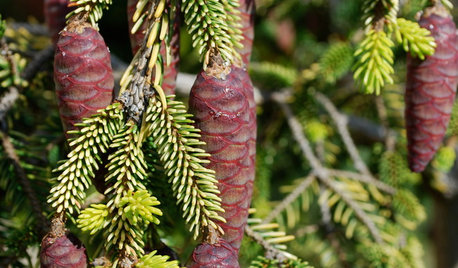Moving Blue Spruce
matotek
17 years ago
Featured Answer
Sort by:Oldest
Comments (11)
matotek
17 years agolast modified: 9 years agoRelated Professionals
Fillmore Landscape Architects & Landscape Designers · Garden City Landscape Architects & Landscape Designers · San Juan Landscape Architects & Landscape Designers · Canton Landscape Contractors · Bedford Heights Landscape Contractors · Berkley Landscape Contractors · Cary Landscape Contractors · Cincinnati Landscape Contractors · Fort Worth Landscape Contractors · Gurnee Landscape Contractors · Mount Kisco Landscape Contractors · West Palm Beach Landscape Contractors · Whittier Landscape Contractors · North Aurora Landscape Contractors · Raytown Landscape Contractorsspruceman
17 years agolast modified: 9 years agoken_adrian Adrian MI cold Z5
17 years agolast modified: 9 years agoken_adrian Adrian MI cold Z5
17 years agolast modified: 9 years agospruceman
17 years agolast modified: 9 years agospruceman
17 years agolast modified: 9 years agomatotek
17 years agolast modified: 9 years agoken_adrian Adrian MI cold Z5
17 years agolast modified: 9 years agobotann
17 years agolast modified: 9 years agoSherwood Botsford (z3, Alberta)
14 years agolast modified: 9 years ago
Related Stories

BATHROOM COLOR8 Ways to Spruce Up an Older Bathroom (Without Remodeling)
Mint tiles got you feeling blue? Don’t demolish — distract the eye by updating small details
Full Story
DECORATING GUIDESSpruce Up Your Rental, No Nails or Paint Required
Refresh your walls and protect your security deposit with 8 damage-free options
Full Story
DECORATING GUIDESHow to Spruce Up Your Neutrals for Spring
We love our neutrals, but with spring in the air, they might just need a little lift
Full Story
DECORATING GUIDES28 Decorating Moves to Try This Month
Treat your interiors to a pick-me-up with these quick and cheerful decorating tricks
Full Story
DECORATING GUIDESSingle Design Moves to Update Your Bedroom
Hankering for a new bedroom look? One change can make the difference
Full Story
LIVING ROOMS15 Decorating Moves to Take Your Living Room to the Next Level
These tricks with furniture, lighting, color and accessories go a long way toward making a space fashionable and comfortable
Full Story
BATHROOM DESIGNRenting? 10 Ways to Spruce Up Your Bathroom
If your rental’s bathroom is blah, don’t give up. Small design moves can make a big difference
Full Story
ENTERTAININGGuest Picks: Garden Party Spruce-Up
Warm weather is calling. Celebrate with a party set outside under the sun
Full Story0

GARDENING GUIDESGreat Design Plant: Skylands Oriental Spruce, a Favorite Conifer
Brighten up a drab corner of your garden with Picea orientalis ‘Skylands’, a smaller spruce that a bird family might just call home
Full Story
FEEL-GOOD HOMEEasy Ways to Spruce Up Your Summer Vacation Rental
If your rented cabin, cottage or beach shack isn’t up to par, fear not. A few tweaks can make it more comfortable
Full Story









ken_adrian Adrian MI cold Z5